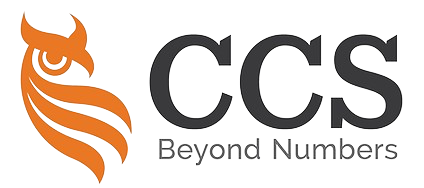The Inland Revenue Board of Malaysia (IRBM) aims to facilitate the country’s transition from traditional to electronic invoicing methods.
The initial phase of the Electronic Invoicing (e-invoicing) system is set for pilot implementation in the first half of 2023. Subsequently, the mandatory implementation is scheduled to commence in June 2024 for businesses with an annual sales turnover threshold of RM100 million.
Through a series of roadshows covering selected zones, namely Klang Valley, Northern Zone, Sarawak Zone and Sabah Zone, the Inland Revenue Board of Malaysia remains committed to continue strategising to ensure the successful implementation of the e-invoicing initiative according to the planned timeline.
The Inland Revenue Board of Malaysia issued a Media Statement and e-invoice guideline year 2023 on 21 July 2023.
Media Statement
In this Media Statement, the Inland Revenue Board of Malaysia (IRBM) is pleased to announce the release of the e-Invoicing General Guidelines for the Year 2023 on its official portal.
This is an important reference and guidance for taxpayers on the e-Invoicing implementation.
The guidelines cover vital areas such as:
– e-invoicing implementation concepts;
– e-invoicing implementation timeline;
– e-invoice issuance and submission process to IRBM;
– Readiness assessment guidance for taxpayers; and
– Specifications of required data fields.
Accompanying the guidelines are Frequently Asked Questions (FAQs) that address common taxpayer queries on e-Invoicing.
Taxpayers can now access and download the e-Invoicing guidelines and FAQs via https://www.hasil.gov.my/e-invois/ to learn more about e-Invoicing requirements and processes.
IRBM welcomes taxpayer feedback on the e-Invoicing implementation at [email protected] as we work together to facilitate a smooth transition. Additional e-Invoicing resources will be provided along the way.
For any inquiries, taxpayers may contact:
- Hasil Care Line at 03-8911 1000 / 603-8911 1100 (overseas),
- HASiL Live Chat or
- the Feedback Form on IRBM’s portal – Customer Feedback Form – CFF (hasil.gov.my)
e-Invoicing Guideline
Here is an overview of the key points covered in the IRBM e-Invoicing Guideline for the Year 2023:
Introduction
- e-Invoicing will be implemented in stages to enhance the efficiency of Malaysia’s tax administration.
- e-Invoice enables instant validation and storage of transactions for B2B, B2C and B2G.
e-Invoice Concepts
- Replaces paper/electronic invoices and credit/debit notes. Contains the exact details like supplier, buyer, items, prices, and taxes.
- Benefits include streamlined processes, reduced errors, facilitated tax filing, and cost and time savings.
- Applies to all commercial transactions and taxpayers in Malaysia. Certain non-business transactions are also included later.
Implementation Timeline
- Rolled out in phases from 2024-2027 based on annual turnover thresholds.
- Voluntary opt-in is available earlier regardless of turnover.
- Notifications will be sent to mandated taxpayers.
e-Invoice Models
- Two models: MyInvois Portal and API Integration
- Portal suitable for micro, small and medium-sized enterprises (MSMEs). API for large taxpayers with high transactions.
- Step-by-step processes are explained for both models.
e-Invoice Overview Workflow
Below demonstrates an overview of the e-Invoice workflow from the point a sale is made or transaction is undertaken, and an e-Invoice is issued by the supplier via MyInvois Portal or API, up to the point of storing cleared e-Invoices on IRBM’s database for taxpayers to view their respective historical e-Invoices

e-Invoice model via MyInvois Portal
Taxpayers must log in to MyTax Portal to utilise MyInvois Portal to perform their e-Invoice obligations per the rules and requirements outlined by IRBM.

Here is an overview of the e-Invoice model using the MyInvois Portal:
- MyInvois Portal is a web application developed by IRBM that allows all taxpayers to perform e-Invoicing functions.
- It is designed for MSMEs and taxpayers unable to issue e-Invoices from their own systems.
- Taxpayers login to the portal using their MyTax credentials.
- e-Invoices can be created individually by filling out a form or generated in batches by uploading files.
- Created e-Invoices are submitted to IRBM via the portal for validation.
- Validated e-Invoices are returned with an IRBM unique identifier for traceability.
- Notifications are sent to the supplier and buyer upon e-Invoice validation.
- Supplier shares cleared e-Invoice containing IRBM’s QR code with the buyer.
- Buyer can request rejection or supplier can cancel e-Invoice within 72 hours of validation.
- Accepted e-Invoices stored in IRBM’s database.
- e-Invoice data can be retrieved from the portal in various formats.
The MyInvois Portal provides an accessible and user-friendly avenue for especially small taxpayers to fulfil e-Invoicing obligations with minimal investment needed in additional technology or systems.
The step-by-step processes make it easy for taxpayers to create, share and retrieve e-Invoices through the portal.
e-Invoice model via API
The API model allows taxpayers to directly submit e-Invoices to IRBM’s MyInvois system using integration with IRBM’s APIs.
Taxpayers or their technology providers will need to configure the API integration, which involves:
- Setting up callback addresses (taxpayer system endpoints for receiving API responses)
- Logging into IRBM’s APIs using digital certificates issued by IRBM
The API configuration will be included in the Software Development Kit (SDK), which is expected to be issued in Q4 of 2023
The e-Invoice data can be transmitted in XML or JSON format based on the defined structure containing the required fields.
The critical steps in the API model are:
- e-Invoice creation and submission via API in the standard format
- Validation by IRBM via APIs – errors are returned if any
- Notifications are sent to the supplier and buyer upon e-Invoice clearance.
- Supplier shares cleared e-Invoice with the buyer.
- Buyer/supplier can reject/cancel e-Invoice within 72 hours of validation.
- Accepted e-Invoices stored in IRBM’s database
- e-Invoice data can be retrieved via APIs by supplier and buyer
The API integration requires some upfront investment in technology but offers seamless transmission of high e-Invoice volumes. IRBM will provide a software development kit (SDK) to facilitate integration.
The API model is ideal for large companies with huge transaction volumes.
Readiness Assessment
- Guide on allocating personnel, evaluating IT systems, and reviewing processes.
key impacts on Small & Medium Enterprises (SMEs)
Here are some of the key impacts and considerations for Small & Medium Enterprises (SMEs) with regard to e-Invoicing implementation:
- The phased approach based on turnover thresholds provides SMEs with more time to transition compared to larger companies.
- The MyInvois portal gives SMEs an accessible channel to issue e-Invoices without needing large investments in technology integration.
- However, SMEs may still need to make some adjustments to their processes, bookkeeping, staff capabilities etc. to migrate to automated e-Invoicing.
- This may entail changes in how transactions are recorded, invoices issued, and credits/debit notes handled.
- Data requirements like Tax ID numbers and proper product codes need to be prepared.
- Advanced features like batch upload, may need staff training and changes to internal systems.
- Vendors providing accounting software and services can assist by building e-Invoicing compatibility.
- While larger SMEs can consider API integration for efficiency, smaller SMEs can fully utilise the MyInvois portal.
- Even without full automation, the portal can reduce manual errors and paperwork compared to traditional invoicing.
- Proper adoption of e-Invoicing can enhance financial reporting, cash flow visibility and tax filing for SMEs through centralized data.
In summary, the impact on SMEs is manageable given the longer transition timeframe and accessible options like the MyInvois portal. Some process changes may be required but the benefits outweigh the effort of migrating to e-Invoicing.
10 Essential Steps for Preparing for e-Invoicing Implementation
Here are some suggested actions for businesses to take now to prepare for the upcoming e-Invoicing implementation:
- Review the e-Invoicing timelines and determine when your organization will be mandated to adopt based on the turnover thresholds.
- Start evaluating your finance and accounting processes related to invoicing, credits, and debits and identify changes needed to issue compliant e-Invoices.
- Assess your existing accounting software, ERPs, and systems to see if they can be integrated with e-Invoicing via API or allow bulk generation of e-Invoices.
- Explore automating the e-Invoice generation process if you have high transaction volumes. However, the MyInvois portal can suffice for smaller businesses.
- Identify resources to manage the e-Invoicing adoption and provide necessary training to your teams. System providers can also assist.
- Verify your Tax ID numbers and ensure customer and supplier records are updated to capture necessary details.
- Engage with your customers/buyers to align e-Invoicing timelines and protocols for sharing and accepting e-Invoices.
- Sign up for IRBM trainings and seminars to be informed of the latest updates and guidance on e-Invoicing.
- Consider participating earlier voluntarily if your systems are ready rather than waiting for the mandated deadline.
- Leverage the availability of resources like the e-Invoicing Guideline and FAQs published by IRBM.
Being proactive and making early preparations will ensure a smooth transition for your business to the new e-Invoicing system.
Key Roles of Tax Agents in e-Invoicing Implementation
Here are some of the key roles tax agents can play with regard to e-Invoicing implementation:
- Advise clients on e-Invoicing timelines and requirements based on their turnover thresholds. Help determine their mandated adoption phase.
- Provide guidance on changes required to their invoicing processes, bookkeeping, and staff capabilities to be e-Invoicing compliant.
- Assist in reviewing clients’ existing accounting software, ERPs and systems to assess e-Invoicing readiness and integration needs.
- Recommend suitable solutions for e-Invoice generation like directly using the MyInvois portal, or integrating via API.
- Assist in mapping tax codes, setting up product catalogues, and configuring accounting systems as needed for e-Invoicing.
- Highlight the benefits of early voluntary adoption if systems are ready rather than waiting for a mandated deadline.
- Conduct staff training on using e-Invoicing solutions, key data requirements, and handling of credits/debits.
- Develop internal protocols and controls around the issuance, acceptance, rejection and cancellation of e-Invoices.
- Providing advisory on common issues faced during transition like change management, and exception handling.
- Help validate that Tax ID records are updated for clients and their customers. Verify compliance before go-live.
- Stay updated on the latest IRBM guidance and share relevant information with clients through briefings.
- Be available to troubleshoot issues faced by clients during the initial rollout period.
With their expertise, tax agents can guide clients to successfully adopt e-Invoicing with minimal disruption to their business operations.
Conclusion Overall, the guidelines provide comprehensive details to facilitate taxpayer transition and preparedness for e-Invoicing implementation.
Let us work hand in hand for the successful implementation of e-Invoicing in Malaysia.
References:
1. Media Statement
2. e-invoice guideline year 2023 on 21 July 2023.
Other related articles that you may be interested in
e-Invoicing Guidelines for the year 2023 are now accessible starting 21 July 2023
A comparison of the key aspects between the e-Invoice model via MyInvois and via API Portal
Transitioning to e-Invoices: Assessing the Options for Your Business [What Businesses Need to Know]
Pre-Submission: e-Invoice Submission Requirements via MyInvois Portal & API
MyInvois Made Easy: Step-by-Step e-Invoicing on the Portal
马来西亚内陆税收局 (IRBM) 2023 年电子发票指南快速略读

Disclaimer:
The articles, templates, and other materials on our website are provided only for your reference.
While we strive to ensure the information presented is current and accurate, we cannot promise the website or its content, including any related graphics. Consequently, any reliance on this information is entirely at your own risk.
If you intend to use the content of our videos and publications as a reference, we recommend that you take the following steps:
- Verify that the information provided is current, accurate, and complete.
- Seek additional professional opinions, as the scope and extent of each issue may be unique.
免责声明:
我们网站上的文章、模板和其他材料只供参考。
虽然我们努力确保所提供的信息是最新和准确的,但我们不能保证网站或其内容,包括任何相关图形的完整性、可靠性、适用性或可用性。因此,您需要承担使用这些信息所带来的风险。
如果你打算使用我们的视频和出版物的内容作为参考,我们建议你采取以下步骤:
- 核实所提供的信息是最新的、准确的和完整的。
- 寻求额外的专业意见,因为每个问题的范围和程度,可能是独特的。
Keep in touch with us so that you can receive timely updates
请与我们保持联系,以获得即时更新。
1. Website ✍️ https://www.ccs-co.com/ 2. Telegram ✍️ http://bit.ly/YourAuditor 3. Facebook ✍
- https://www.facebook.com/YourHRAdvisory/?ref=pages_you_manage
- https://www.facebook.com/YourAuditor/?ref=pages_you_manage
4. Blog ✍ https://lnkd.in/e-Pu8_G 5. Google ✍ https://lnkd.in/ehZE6mxy
6. LinkedIn ✍ https://www.linkedin.com/company/74734209/admin/
7. Threads ✍ https://www.threads.net/@ccs_your_auditor
8. 小红书 ID ✍ 2855859831






